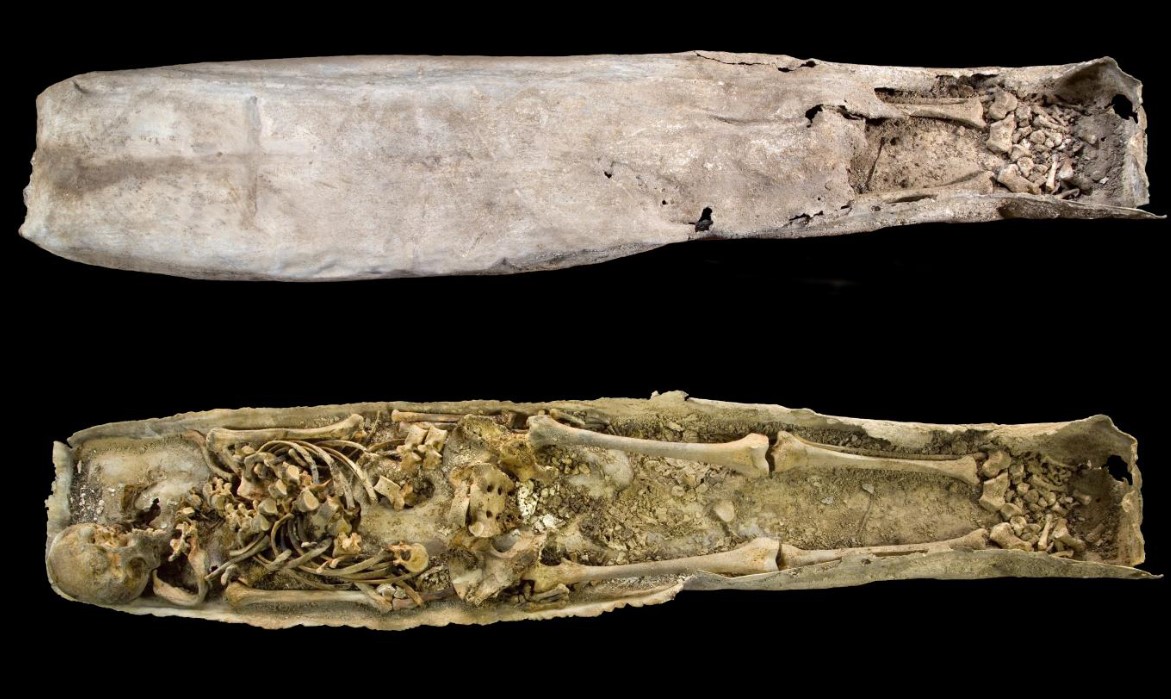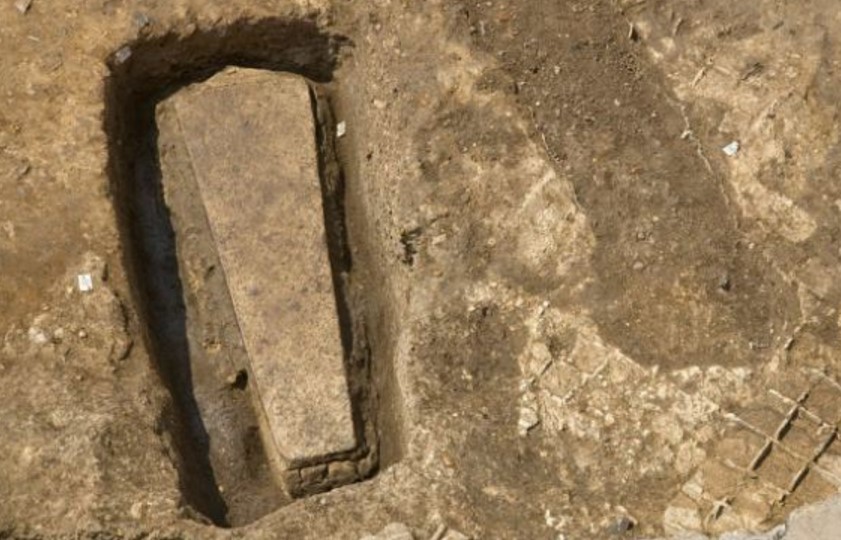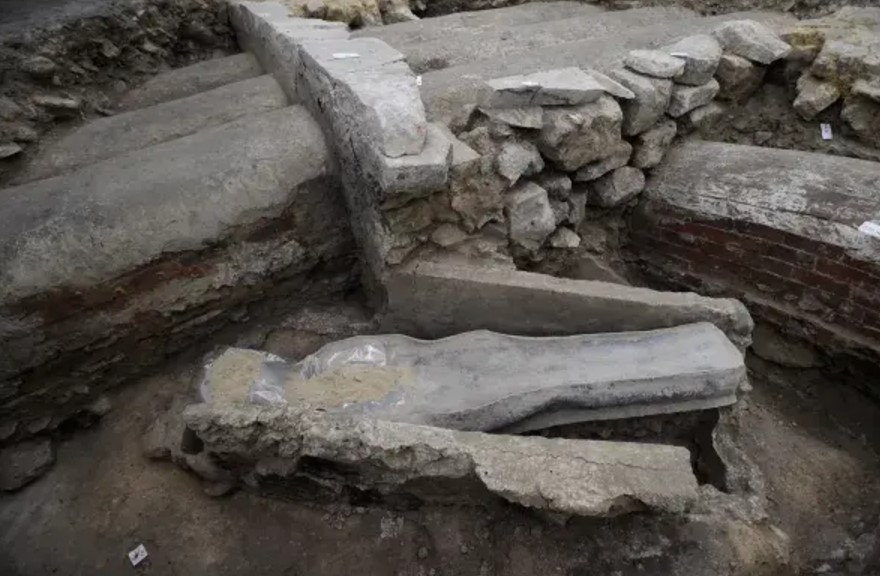In 2012, the Stone Coffin of King Richard III’s remains under a car park in Leicester stunned historians and archaeologists worldwide. Yet, this extraordinary site continued to yield surprises. As the excavation was nearing completion, archaeologists uncovered another intriguing find: a stone coffin, buried not far from the infamous king’s final resting place. What followed was a story filled with mystery, challenges, and unanswered questions about medieval life and death. Follow archeology.dulichvn.net to learn more about the world’s unsolved mysteries.
1. The Discovery of the Stone Coffin
The stone coffin was discovered in the same excavation that brought Richard III’s remains to light.

1.1. Unearthing a Hidden Grave
The grave containing the coffin was unearthed during the final stages of excavation. Its position and the fragile condition of the coffin meant archaeologists had to pause their work and return in 2013 to complete the delicate process.
1.2. A Difficult Excavation
Removing the coffin was no easy task. Its sides and bottom were cracked and crumbling under the weight of time and earth. Heavy machinery couldn’t be used due to the uneven ground, forcing the team to remove the lid manually.
1.3. A Coffin Within a Coffin
Inside the fragile stone coffin lay a second container—a lead coffin. This discovery added an extra layer of intrigue, as lead coffins were rare and typically reserved for the wealthy or significant individuals.
2. The Woman Within the Lead Coffin
What lay inside the lead coffin surprised researchers even further.

2.1. Skeletal Remains of a Woman
The coffin contained the well-preserved skeletal remains of a woman estimated to have been around 60 years old at the time of her death. Initial findings suggested she had died around 1400, though her burial could date as far back as the mid-1200s.
2.2. Hints of Her Burial
Fragments of cord and possible remnants of a burial shroud were found with her remains, indicating she had been laid to rest with care. These details, along with the lead coffin, hinted at her importance.
2.3. A Mystery Identity
Despite these clues, her identity remains unknown. One theory suggests she could be Emma Holt, the wife of John Holt, a benefactor of the Franciscan friary that once stood on the site. Records indicate that Emma’s body was interred in the friary, but no definitive evidence connects her to this burial.
3. The Historical Context of the Friary
The site where the stone coffin was found provides valuable insights into medieval Leicester and the role of the friary.

3.1. The Franciscan Friary
The friary, established in the 13th century, was a spiritual and social hub. Wealthy patrons often supported such institutions and were sometimes buried on-site as a sign of devotion.
3.2. A Resting Place for the Elite
The use of a lead coffin and the prominent burial site suggest the woman was of high status. She might have been a benefactor of the friary or a noblewoman with strong ties to the church.
3.3. Burial Practices of the Time
Medieval burials often reflected the deceased’s social standing and piety. The care taken in crafting and preserving this woman’s final resting place suggests she held a significant position in society.
4. The Challenges of Identification
Despite modern technology, identifying the woman in the coffin has proven elusive.

4.1. DNA Analysis
Attempts to trace her DNA to modern descendants have so far been unsuccessful. The lack of genetic connections adds to the mystery surrounding her identity.
4.2. Limited Historical Records
While records of burials at the friary exist, they are incomplete and often vague. This makes it difficult to match the remains with a specific individual.
4.3. The Role of Archaeological Evidence
Archaeologists rely on burial artifacts and contextual clues, but the sparse contents of the coffin—cord, shroud fragments, and the lead coffin itself—offer limited information.
5. The Legacy of the Stone Coffin
The discovery of the stone coffin highlights the enduring mysteries of medieval history.

5.1. An Intriguing Footnote to Richard III
While Richard III’s rediscovery garnered worldwide attention, the stone coffin adds depth to the story of Leicester’s medieval past, showcasing the richness of the site’s history.
5.2. A Window into Medieval Society
The burial provides insights into medieval burial practices, social hierarchies, and the importance of religious institutions like the friary.
5.3. A Mystery That Endures
The woman’s identity may never be known, but her burial continues to fascinate and inspire further research. She stands as a symbol of the untold stories buried beneath our feet.
Conclusion
The discovery of the stone coffin near Richard III’s grave is a reminder of the layers of history hidden beneath modern landscapes. The woman within the lead coffin remains an enigma, her story a tantalizing glimpse into medieval life. As researchers continue to study her remains and the context of her burial, this extraordinary find keeps the mysteries of Leicester’s past alive, offering a bridge between history, archaeology, and human curiosity.

CÁC TIN KHÁC
Mary Walton: The Forgotten Inventor Who Helped Clean Up America’s Cities
Tomb of Queen Nefertari in the Valley of the Queens, Egypt
Discover the Hypostyle Hall of the Temple of Hathor at Dendera
Venus de Losange: Unveiling the Mystery of a 20,000-Year-Old Paleolithic Icon